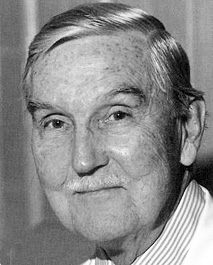
Although he looked and sounded like an English nobleman, Dr John Conley was born in Carnegie, Pennsylvania, a small steel mill town just outside of Pittsburgh. He graduated from the University of Pittsburgh and later its school of medicine. He interned at Mercy Hospital in Pittsburgh. During that year, the nuns who ran the hospital suggested that Dr. Conley take a residency in cardiology and come back to Mercy as their cardiologist. He went to Kings County Hospital in Brooklyn, a very busy city hospital with a huge patient population. Shortly after he began his training, he had an arrhythmia diagnosed as paroxysmal atrial tachycardia. Little was known about this benign condition at that time. Dr. Conley was told that cardiology was too stressful and that he should go into an easier, less-stressful field with better working hours, like ENT. He did an otolaryngology residency at Kings County Hospital. This was followed by four years of military service during World War II, which included experience in otolaryngology and plastic and reconstructive and maxillofacial surgery in the U.S. Army Medical Corps, both in this country and in the South Pacific theater. Exposure to the reconstruction of war wounds would prove invaluable to him later on in applying these principles to reconstruction following ablative head and neck surgery.
Dr. Conley returned to New York City after the war. He became an assistant and then an associate of Dr George T. Pack, a technically superb general oncologic surgeon at Memorial Hospital who taught Dr. Conley major ablative surgery of the head and neck. They worked day and night catching up with the backlog of surgery that was neglected during the war years. The combination of his training in otolaryngology, the exposure to ablative surgery, and the World War II experience in reconstructive surgery set the stage for Dr Conley to evolve his unique approach to head and neck surgery.
Ironically, despite the admonition of the cardiologists about hard work, Dr. Conley did a prodigious amount of major head and neck reconstructive surgery. This proved to be more than ample to provide training to many fellows. His commitment to education is further attested to by the position he held for many years as Clinical Professor of Otolaryngology at the College of Physicians and Surgeons at Columbia University. He loved his appointment at Columbia and particularly his involvement in teaching the residents.
Dr. Conley’s vast surgical experience, together with active research interests, led to the authorship of almost 300 contributions to the scientific literature, and eight books. As a result of his productivity and rhetorical eloquence, he was very much in demand as a speaker in this country and abroad. He gave many prestigious eponymous lectures in our field and received many awards for his work, including the Philip H. Hench Award as the Distinguished Alumnus of the University of Pittsburgh School of Medicine, and the DeRoaldes and Newcomb Awards of the American Laryngological Association.
Dr. Conley’s contributions to the scientific literature, many technical innovations and surgical experience placed him in the position to receive many honors and important leadership positions, such as President of the American Academy of Otolaryngology and Ophthalmology, member of the Board of Governors of the American College of Surgeons, founding member of the Society of Head and Neck Surgeons, and founding member and first President of the American Society for Head and Neck Surgery. During those years, Dr Conley used, to the great benefit of us all, his wisdom and diplomacy in carrying out such high-level responsibilities.